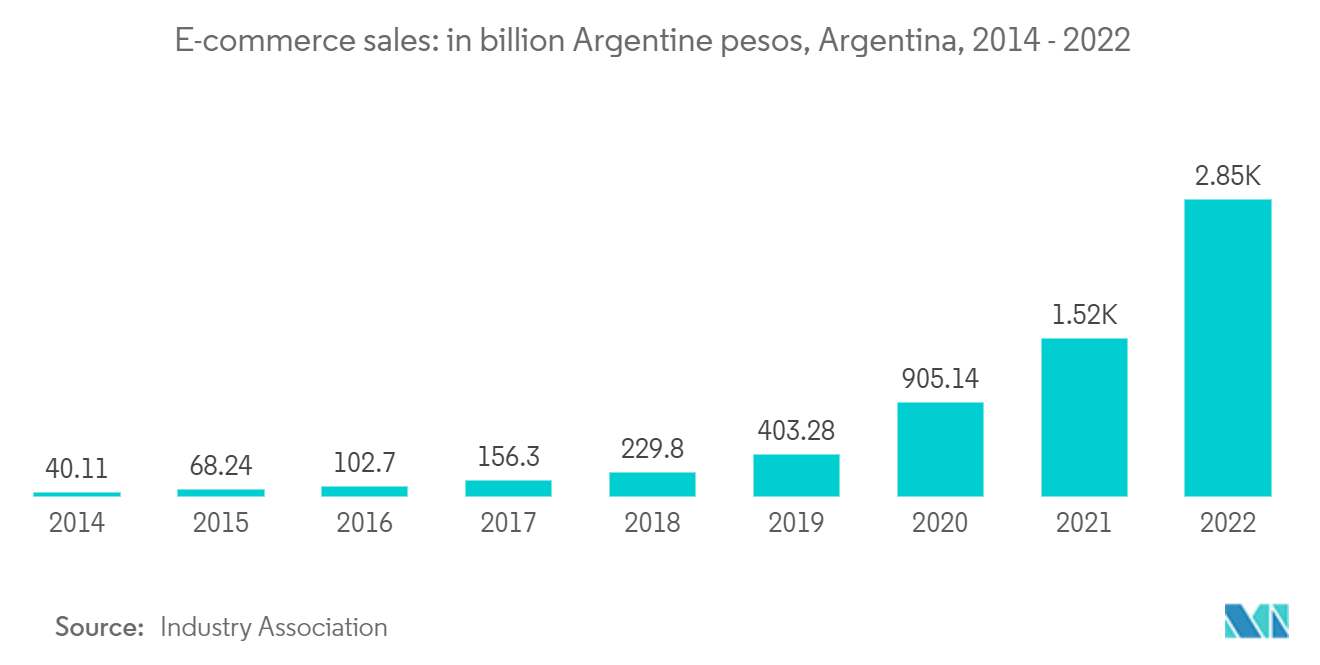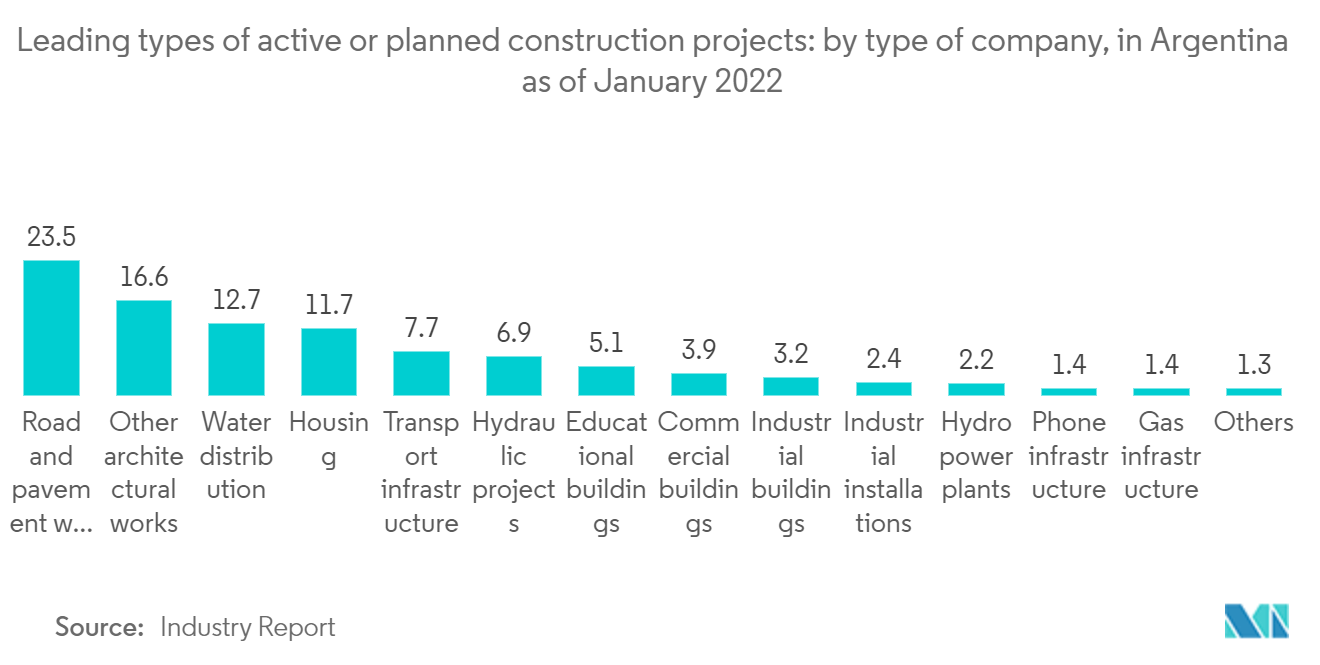Market Trends of Argentina Road Freight Transport Industry
Growing e-commerce in Argentina
- The development of technology in the e-commerce sector and the advent of the digital era have triggered changes in delivery logistics. Over the years, there has been a significant transformation in the Internet sales business.
- E-commerce logistics is the logistics of online sales that entails putting in place particular procedures to react to certain flow management. It is accompanied by e-commerce shipping, which necessitates a different setup for retail shipping. It assumes control of a variety of supply chain operations, including order pickup, offering transportation services, delivering goods to customers, providing storage, and other services. Real-time package tracking is now possible thanks to IoT, which is now required to prevent delivery issues or loss.
- With a forecasted revenue of USD 8,890.4 million by 2023, Argentina will surpass Peru to take the 35th-largest spot in the eCommerce market rankings. By 2027, the market volume is anticipated to reach USD 15,349.8 million, with revenue predicted to expand at 14.6%.
- The Argentine eCommerce market contributed to the global growth rate of 17.0% in 2023, with an anticipated increase of 23.9%. Global eCommerce sales are anticipated to grow over the coming years, just like they did in Argentina.
- Within the Argentinian eCommerce market, e-commerce takes into account five markets. The largest market in Argentina and the source of 24.5% of all eCommerce sales is furniture and appliances. Following it are Electronics & Media (22.3%), Fashion (21.1%), Toys, Hobby & DIY (16.8%), Fashion (15.3%), and Food & Personal Care.

Developing transportation infrastructure boosting the market
- In comparison to other Latin American countries, Argentina has an excellent infrastructure system, yet many places still require major upgrading. Only 63,553 kilometers (39,492 miles) of the country's 215,434 kilometers (133,870 miles) of roads are paved. This includes 734 kilometers (456 miles) of motorways or highways.
- Several aid packages to upgrade the infrastructure of Argentina have been given to the country. For instance, the World Bank contributed USD 450 million, while the United States gave USD 7 million for the construction of highways. Argentina has a vast rail network that covers a distance of 38,326 kilometers (23,816 miles), carrying both passengers and freight.
- There are 10,950 km (6,804 miles) of navigable waterways in Argentina. However, the majority of the nation's major ports are found near the Atlantic coast, and only a small amount of freight is moved by inland rivers.
- The nation's principal ports are located on the Atlantic Coast and include Bahia Blanca, Buenos Aires, Comodoro Rivadavia, La Plata, and Mar La Plata. Rosario and Santa Fe are inland river ports, whereas Ushuaia is situated at Cape Horn at the country's furthest southernmost point, where the Atlantic and Pacific Oceans converge. 26 ships totaling more than 1,000 tonnes in gross weight make up Argentina's modest merchant marine. This number includes 11 oil tankers.
- There is a large pipeline network that transports resources to ports for export and supplies fuel to inland communities. There are pipelines for crude oil of 4,090 kilometers (2,542 miles), other petroleum products of 2,900 kilometers (1,802 miles), and natural gas of 9,918 kilometers (6,163 miles).


